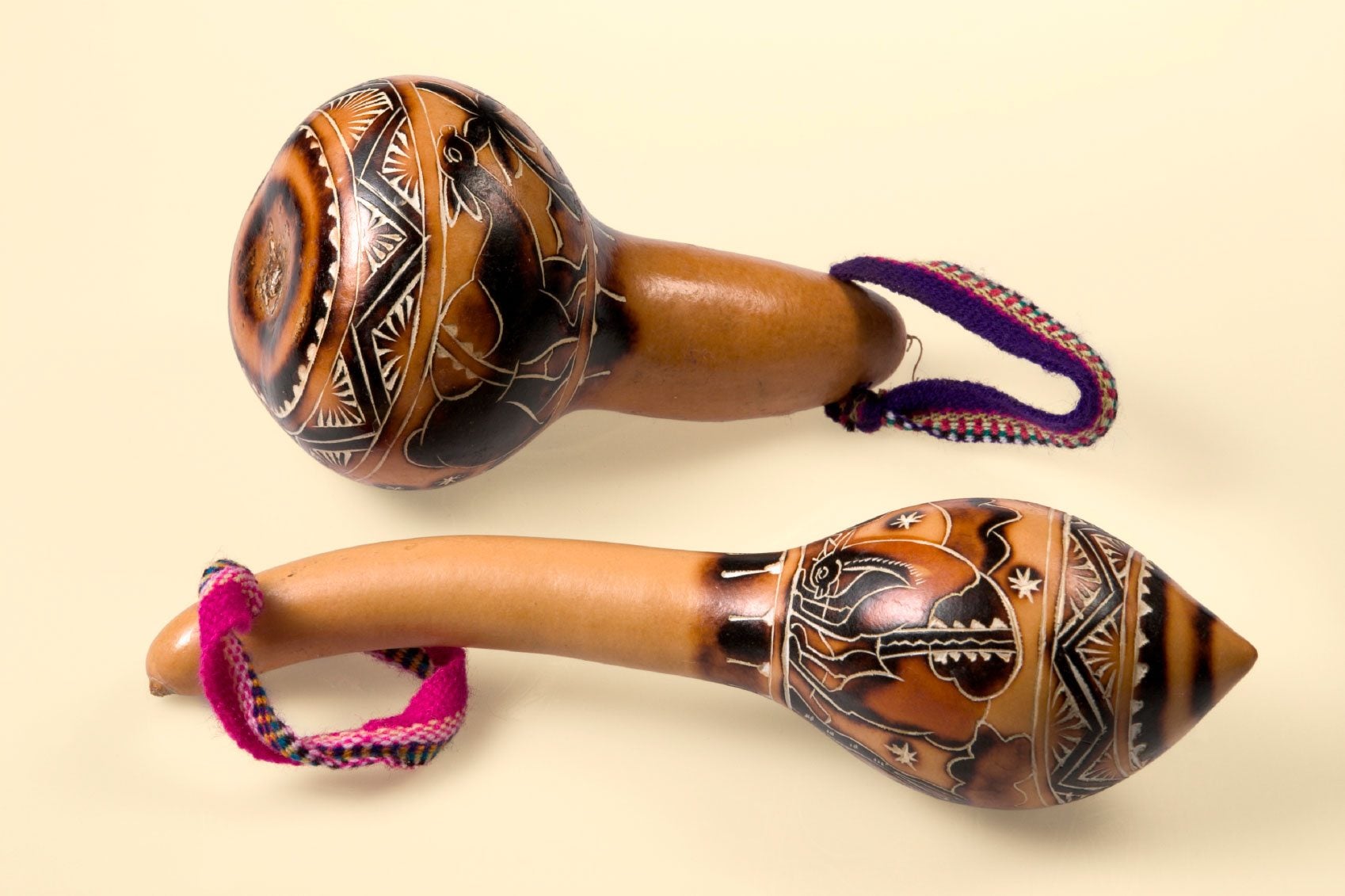Dried Gourd Maracas: Tips For Making Gourd Maracas With Kids

If you are looking for a project for your children, something educational, yet fun and inexpensive, might I suggest making gourd maracas? There are other great gourd activities for kids, such as growing a gourd birdhouse, but using gourds for maracas is a simple way to start gourd crafting and is suitable (with adult supervision) for a wide age group.
Using Gourd Maracas
Maracas, also referred to as rumba shakers, are musical instruments native to Puerto Rico, Cuba, Colombia Guatemala, and regions of the Caribbean and other Latin American countries. Sometimes they are made of leather, wood, or plastic, but the traditional material is a gourd, dried calabash, or coconut filled with seeds or dried beans. When using gourds for maracas, select one that will easily fit in the palm of the hand. Make sure the gourd has no visible rot or open wounds on the exterior.
How to Make a Gourd Maraca
Cut a small hole in the bottom of the gourd; this is where parental assistance is necessary if the kids are young. Don't make the hole any bigger than your thumb. Scoop out the seeds and pulp from inside the gourd, about two thirds of the interior should be scraped out. Then let dry overnight in a dry area. The interior of your maraca can then be filled with pebbles, dried beans, or even rice. The rice is used uncooked, but the dried beans need to go in the oven for 20 minutes or so at 350 degrees F. (176 C.) and then cooled. Again, depending upon the age of the child, adult supervision is required. Insert a smooth, wooden dowel into the hole and seal it with glue. Secure even more thoroughly with tape wound around the handle and opening. Tada! You can begin playing your new percussion instrument right now or decorate it with non-toxic paint. Follow up the painting with a coat of shellac to preserve the maraca, which will last two weeks or even longer. A variant of this activity is to make a shekere shaker, which is a musical shaker used by the Yoruba people of Nigeria. A shekere shaker is a dried gourd maraca that has beads, seeds, or even small shells attached to netting that is then draped over the outside of the gourd. When it is shaken or slapped, the beads hit the outside of the gourd, creating a rhythmic sound. Creating shekere shakers is a bit more in-depth than making gourd maracas. For dried gourd maracas, begin as you would for the above, but once the gourd is cleaned out, it must be dried. To do this, you can lay it in the hot sun or, to expedite the process, dry it in the oven at a low set temperature. Once it is dried, you can opt to paint the interior with shellac to prolong the shelf life. Now that the gourd is dried, tie a band of string around the neck. Cut 12 more pieces of string (or more for big gourds) two times the height of the gourd and tie to the band of string around the neck. Dip the string in melted wax to ease the threading of the beads. Make a knot in the string, thread a bead, and tie a knot. Repeat until you have four or five beads on each of the strings. Tie or tape the strings of beads to the base of the gourd to hold them in place. There are excellent online instructions with step-by-step instructions and illustrations as well.
Gardening tips, videos, info and more delivered right to your inbox!
Sign up for the Gardening Know How newsletter today and receive a free copy of our e-book "How to Grow Delicious Tomatoes".

Amy Grant has been gardening for 30 years and writing for 15. A professional chef and caterer, Amy's area of expertise is culinary gardening.
-
 Looking For Plants To Give You The Soft And Fuzzies? Try These 5 Fuzzy Leaf Plant Options
Looking For Plants To Give You The Soft And Fuzzies? Try These 5 Fuzzy Leaf Plant OptionsLovers of texture, drama, silver foliage and tactile plants will adore these special sensory garden additions. These fuzzy leaf plant options will leave you all aglow
By Susan Albert
-
 Get Ready For A Summer Of Hummers! Grow These Full Sun Hummingbird Plants and Flowers
Get Ready For A Summer Of Hummers! Grow These Full Sun Hummingbird Plants and FlowersIf you’re lucky enough to enjoy a sunny backyard, make sure you are maxing out on your pollinator opportunities and grow these full sun hummingbird plants and flowers
By Tonya Barnett